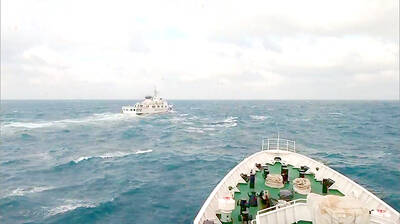The Consumers’ Foundation yesterday said a decision by the Department of Health to initiate the second-generation National Health Insurance (NHI) program at the current premium rate of 5.17 percent rather than at 4.91 percent, as announced in May, was a breach of faith and would steal from the poor to benefit the rich.
The second-generation NHI program is scheduled to be implemented in January, with a supplementary premium of 2 percent, the foundation said, adding that Department of Health Minister Chiu Wen-ta (邱文達) had said in April that the current premium rate should be adjusted to 4.91 percent.
The department is breaking its promise and is disguising the fact that the premuim will be increased, the foundation said.
“According to statistics, NHI expenditure on households with the lowest 20 percent of income grew by only 4 percent between 2000 and 2009, but expenditure on households with the highest 20 percent of income grew by 40 percent in the same period,” Consumers’ Foundation board member Hsieh Tien-jen (謝天仁) said.
“Rich people are using more medical resources than poor people, but paying the same premium rate,” he said. “This is against the spirit of the second-generation NHI program and the department should be held responsible.”
In addition, while GDP this year is expected to be below 2 percent, the growth rate of the NHI program this year is 4.3 percent and the growth rate of the total expenditure cap is set at 6 percent, he said, adding that he wondered how the medical industry can be booming while other industries suffer.
Moreover, the department has allocated a NT$4.5 billion (US$152 million) budget to improve the quality of nursing in medical facilities, but cases of nurses being overworked remain in the news, Hsieh said, adding that the foundation urges the department to re-evaluate the funding for the NHI program and to examine whether the money is being put to proper use.
The foundation said it feared an increased NHI program would result in wasteful spending on medical resources, while consumers would have to pay a higher premium than at present, which is a heavy burden for the poorer people in society.
He urged the department to keep its promise and lower the premium to 4.91 percent, as well as re-evaluate expenditure to ensure it is being used effectively.
In related developments, a proposed policy to levy a 2 percent supplementary premium on interest-derived income above a threshold of NT$2,000 on a single account has seen people searching for a legal loophole by splitting their savings accounts.
In addition to interest-derived income, the new system would also tax supplementary premiums — which will be calculated on a single-transaction basis on the principle of “withholding the premium at source” — on income earned from other sources, such as bonuses, stock dividends and rental income.
The maximum amount for each transaction is set at NT$10 million.
The 2 percent premium will be applied to both cash dividends and stock dividends, which are calculated at NT$10 per share, should the combined value of a person’s annual dividends exceed the statutory threshold.
However, if the amount of cash dividends obtained by a stockholder falls short of covering the said person’s payable premium, the Bureau of National Health Insurance would issue a payment demand to that person or take the amount from their next monthly premium.
At present, the average interest rate on a savings account is 1.38 percent, which means that an account holder would pay a NT$40 supplementary premium if the savings in that account amount to NT$145,000.

The Ministry of Foreign Affairs (MOFA) yesterday said it is closely monitoring developments in Venezuela, and would continue to cooperate with democratic allies and work together for regional and global security, stability, and prosperity. The remarks came after the US on Saturday launched a series of airstrikes in Venezuela and kidnapped Venezuelan President Nicolas Maduro, who was later flown to New York along with his wife. The pair face US charges related to drug trafficking and alleged cooperation with gangs designated as terrorist organizations. Maduro has denied the allegations. The ministry said that it is closely monitoring the political and economic situation

UNRELENTING: China attempted cyberattacks on Taiwan’s critical infrastructure 2.63 million times per day last year, up from 1.23 million in 2023, the NSB said China’s cyberarmy has long engaged in cyberattacks against Taiwan’s critical infrastructure, employing diverse and evolving tactics, the National Security Bureau (NSB) said yesterday, adding that cyberattacks on critical energy infrastructure last year increased 10-fold compared with the previous year. The NSB yesterday released a report titled Analysis on China’s Cyber Threats to Taiwan’s Critical Infrastructure in 2025, outlining the number of cyberattacks, major tactics and hacker groups. Taiwan’s national intelligence community identified a large number of cybersecurity incidents last year, the bureau said in a statement. China’s cyberarmy last year launched an average of 2.63 million intrusion attempts per day targeting Taiwan’s critical

‘SLICING METHOD’: In the event of a blockade, the China Coast Guard would intercept Taiwanese ships while its navy would seek to deter foreign intervention China’s military drills around Taiwan this week signaled potential strategies to cut the nation off from energy supplies and foreign military assistance, a US think tank report said. The Chinese People’s Liberation Army (PLA) conducted what it called “Justice Mission 2025” exercises from Monday to Tuesday in five maritime zones and airspace around Taiwan, calling them a warning to “Taiwanese independence” forces. In a report released on Wednesday, the Institute for the Study of War said the exercises effectively simulated blocking shipping routes to major port cities, including Kaohsiung, Keelung and Hualien. Taiwan would be highly vulnerable under such a blockade, because it

Conflict with Taiwan could leave China with “massive economic disruption, catastrophic military losses, significant social unrest, and devastating sanctions,” a US think tank said in a report released on Monday. The German Marshall Fund released a report titled If China Attacks Taiwan: The Consequences for China of “Minor Conflict” and “Major War” Scenarios. The report details the “massive” economic, military, social and international costs to China in the event of a minor conflict or major war with Taiwan, estimating that the Chinese People’s Liberation Army (PLA) could sustain losses of more than half of its active-duty ground forces, including 100,000 troops. Understanding Chinese